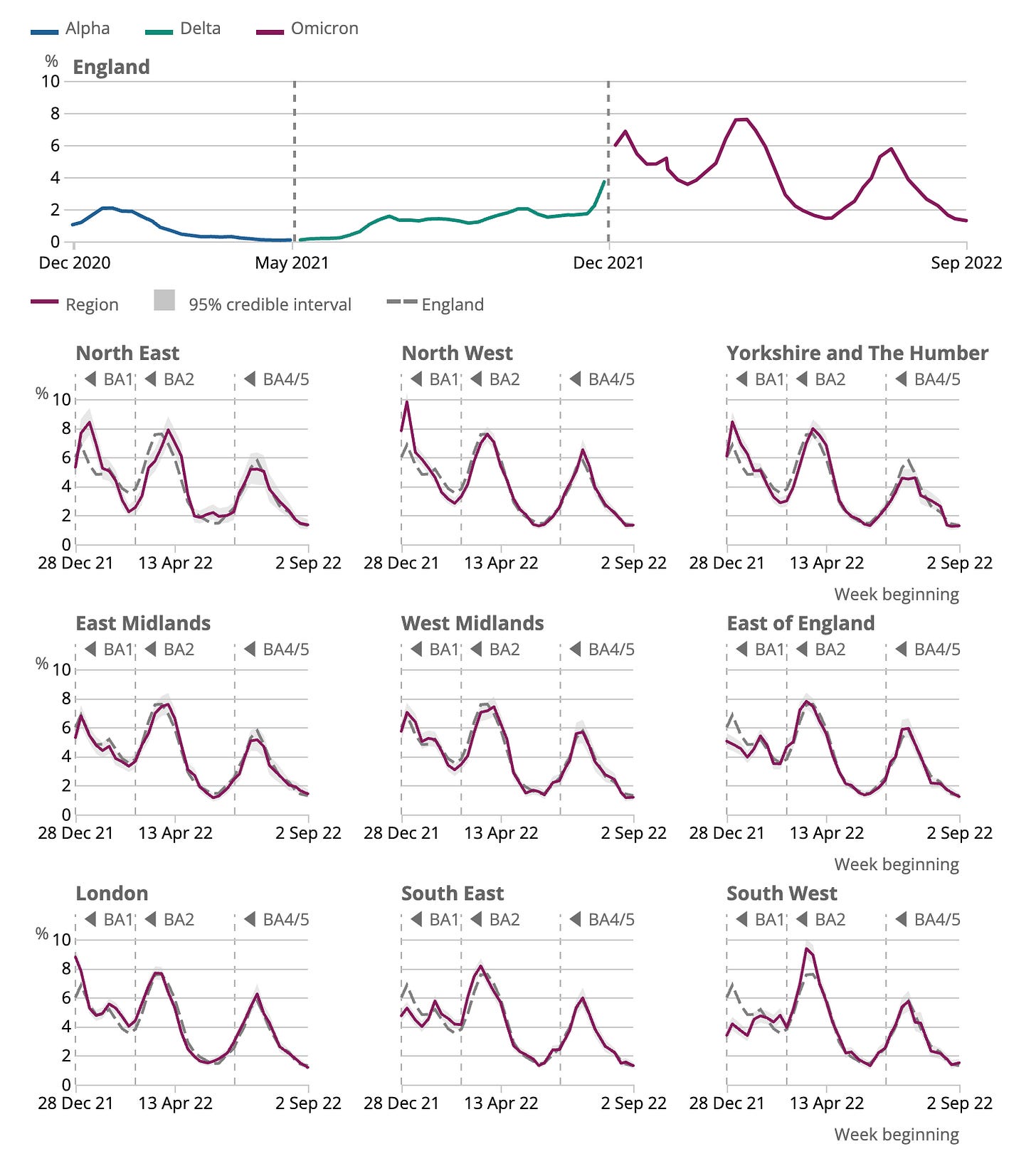Misinfo-statistics
A new study shows the majority of UK children being hospitalised for Covid at the end of the study period were vaccinated, but the spin, using historical aggregates, is the opposite.
“75% of children hospitalised with Covid-19 were unvaccinated!”, is the essence of a misleading claim being amplified on Twitter based on the publication of a new study. One one of the study co-authors – Deepti Gurdasani – implies it is more evidence of the urgent need for childhood Covid vaccinations.
But the study itself shows the majority of children being hospitalised at the end of the study period were vaccinated, and a wealth of ONS data highlight the absurdity of the simplistic analysis.
A new study out in the BMJ, Hospital admissions linked to SARS-CoV-2 infection in children and adolescents: cohort study of 3.2 million first ascertained infections in England, includes a supplementary table (PDF, p.13).
It shows that by the end of the study period, just over 50% of children admitted to hospital with SARS-CoV-2 were vaccinated (with the rate reaching 56% in those with a risk factor).
What was the overall vaccination uptake in that cohort around that time?
56.8%.
9th January 2022 ONS dataset (.xls)
That’s as of January 9th, 2022, according to a data release in February 2022 (the study end date), from the Office of National Statistics.
11% of hospital admissions had two doses (and 18% in the at-risk group), versus a two-dose rate in the general population for that cohort of 15.7%.
So efficacy either way is entirely unclear from their own data.
Because of course a crude comparison of rates vs admissions misses obvious confounders (at-risk children may have been more likely to be vaccinated, or not, if you believe JCVI created hesitancy across the population, as study co-author Gurdasani does).
But there are many other confounders this study misses, because it just doesn’t consider any.
The geographic aspect to vaccination rates is one, which adds to the confounding complexity in trying to determine anything statistically meaningful here, considering London schools had the lowest vaccination rates in the country (a median of below 40%).
Coronavirus (COVID-19) vaccination uptake in school pupils, England: up to 9 January 2022, UK Office of National Statistics.
Further confounding any analysis is the reality that waves (and so likelihood of exposure) also had a geographic bias which hit London earlier than other regions like the South East and South West (with higher vaccination rates and whose peaks occurred after this study period window ended in February 2022).
Coronavirus (COVID-19) latest insights: Infections, 30 March, 2023, UK Office of National Statistics
So the overall vaccination rate roughly matches the rate we see in hospitalisation, but areas with more exposure, like London, had much lower vaccination rates, and a higher probability of exposure during the study period.
Considering all this, it would be a real reach to make any statistical claims as to the efficacy of the intervention based on this study analysis alone.
Aggregate historical data used to assert efficacy
But reach they do.
In the one brief section of the study specifically dealing with vaccination, they ignore their own supplementary data, as well as nuanced consideration of geographic vaccination rates and likelihood of exposure, and reach for a base rate fallacy by crudely aggregating all historical hospitalisation data.
This brief commentary alluding to paediatric vaccine efficacy, with its poverty of statistical analysis and nuance, is apparently enough to prompt a study co-author, Deepti Gurdasani, to launch into a Twitter thread on the importance of childhood Covid vaccination, and the apparent recklessness of bodies like the UK’s Joint Committee on Vaccination & Immunisation (JCVI).
Apparently this new study is just another reminder of how many hospitalisations and deaths could’ve been averted with the intervention, even though the data within it does not indicate that at all (unless of course base rate fallacies are in fashion again).
As mentioned earlier, through a little careful reading, we discover that the supplementary table in that report skewers the narrative being amplified around this study, clearly showing that the vax status of childhood admissions moves up to roughly match the vaccination rate in that same cohort.
This misuse of statistics is so very strange.
It is not at all clear from this data that childhood Covid vaccination had any meaningful impact on hospitalisation rates, and depending on the confounding variables it could go either way (from a positive through to a negative impact on efficacy).
But to boosters of intervention, this nuance and real uncertainty is no cause for concern in pursuit of a fixated narrative.
Misinfo-statistics.













Hey JustSee I've added your analysis in...with thanks for drawing attention to this
https://totalityofevidence.com/vaccine-adverse-events-in-children/